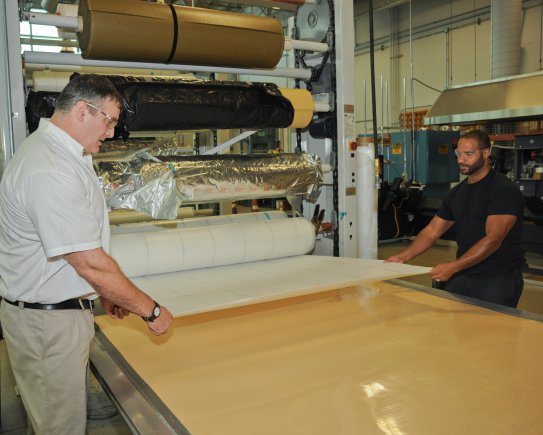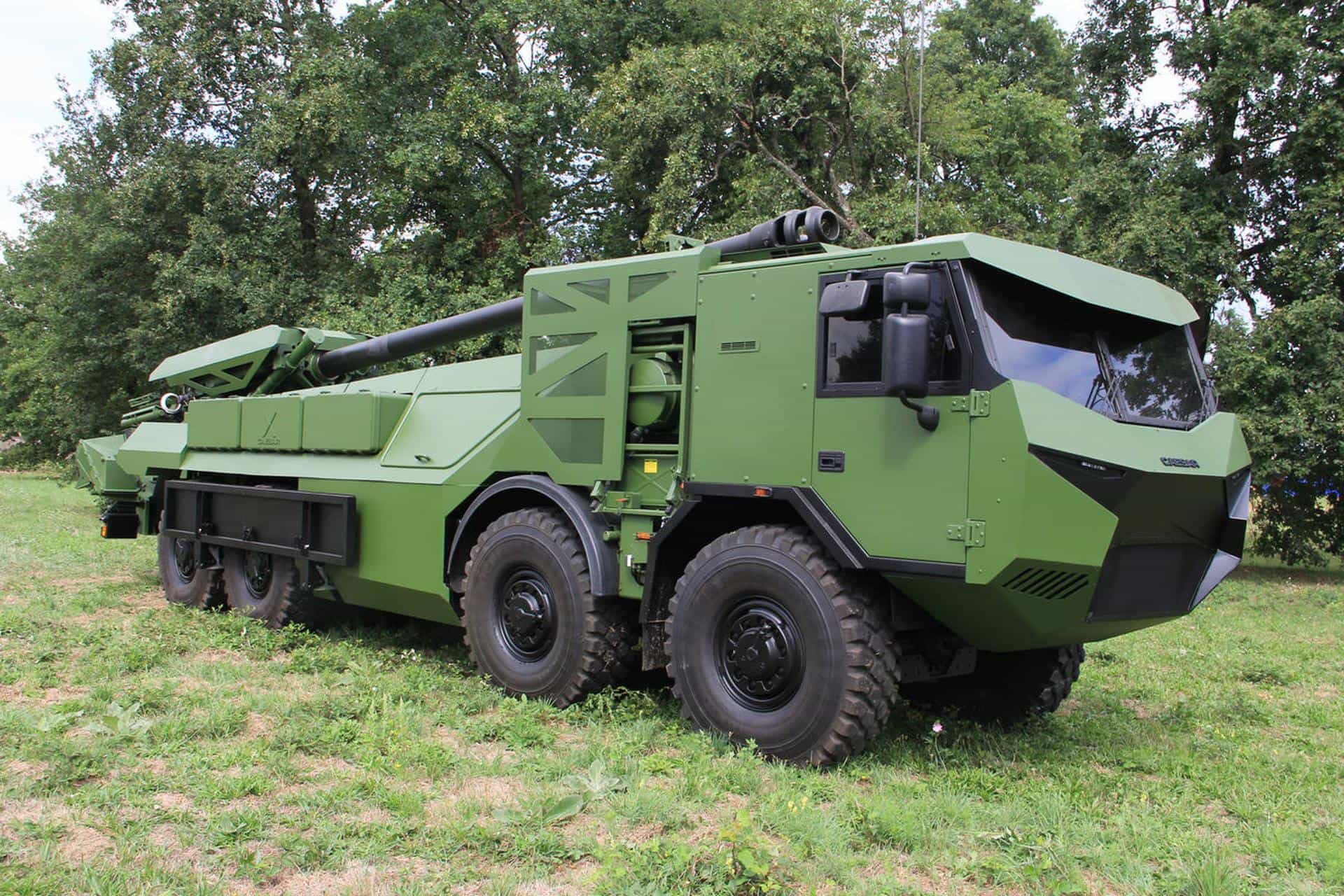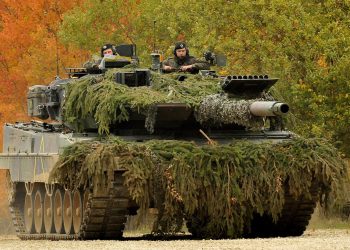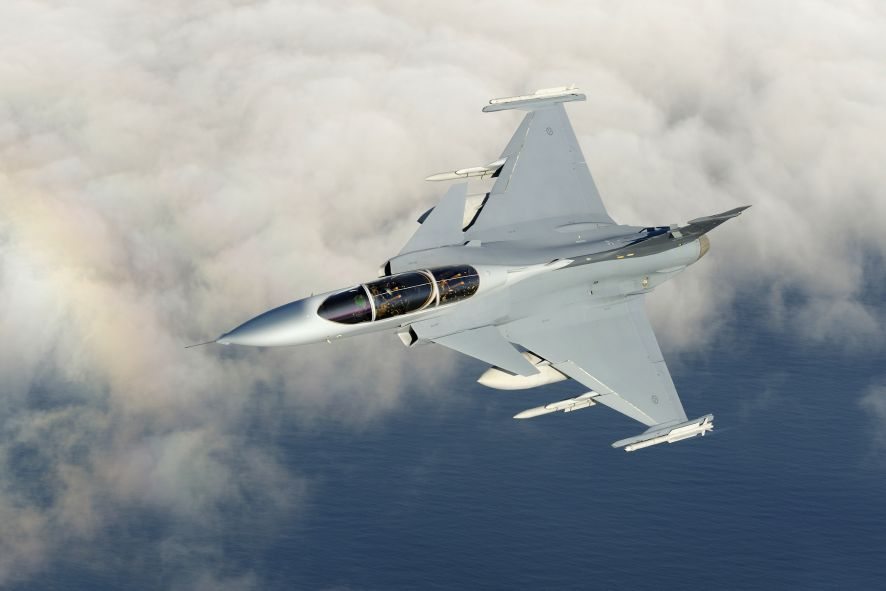Soldiers facing rugged terrain and extreme temperatures are continually searching for ways to reduce the weight of their gear.
In a search for solutions to this persistent issue, U.S. Army scientists and engineers have preliminarily demonstrated body armor that is 10 percent lighter through new manufacturing processes.
The U.S. Army Research, Development and Engineering Command, known as RDECOM, along with its industry partners, has leveraged the Army’s Manufacturing Technology Program to spur the Advanced Body Armor Project.
Shawn Walsh, Ph.D., leads the project at RDECOM’s Army Research Laboratory, or ARL, where his team has reduced the weight of a size medium Enhanced Small Arms Protective Insert plate from 5.45 pounds to 4.9 pounds.
While the Army leads the research, the new armor will also benefit the Marine Corps, Air Force, Navy and U.S. Special Operations Command, with similar body-armor requirements. In addition, highly novel technology initially identified by the Army has since been supported by SOCOM, pervasively benefiting lightweight body-armor goals overall.
“The armor the Soldier is wearing right now is the best armor we can possibly give them,” said Walsh, the Agile Manufacturing Technology team leader within the Weapons and Material Research Directorate. “The one concern that we hear about it — can you make it lighter? That’s the number one request. We don’t want to compromise the protection, but want to reduce the weight. It’s a challenging problem, and ARL should take on high-risk programs like that.”
The current weight-reduction technologies in the laboratory were impractical for mass production and fielding, Walsh said. The project focused on developing manufacturing methods that resolve these issues.
To accomplish this weight reduction, researchers pushed advances in composites, ceramics and component integration. All the materials must work in tandem to provide the necessary performance characteristics — stopping the bullet, managing the bullet’s momentum, and preventing trauma to the wearer.
Project Manager Soldier Protection and Individual Equipment, or PM SPIE, had requested lighter body armor several times but did not receive a satisfactory response from industry, Walsh said.
“That’s an indicator that there’s a technology gap,” Walsh said. “We realized there is something that the [project manager] wants for the Soldier, but can’t get from industry. Maybe it’s inherently not achievable, or maybe people haven’t tried an innovative approach. We assumed the latter. In our particular case, we used processing technology as a method for achieving these weight reductions.”
ARL turned to the ManTech program and the Office of the Secretary of Defense’s Defense-Wide Manufacturing Science and Technology, or DMS&T, programs for this challenge that was “beyond the normal risk of industry.” The ManTech program provides funding for the Army’s research and engineering organizations to partner with the defense industrial base to overcome manufacturing obstacles and deliver new capabilities into Soldiers’ hands.
“The ManTech and DMS&T programs give us a unique opportunity,” Walsh said. “We knew there were some untapped potential technologies, and manufacturing would be the integration step. ManTech offers industry a catalyst. This program allowed them to exercise some of their novel technologies they want to try. It’s an incentive to take a little risk.”
Because the Army does not manufacture equipment, it must ensure there are companies capable of meeting production demands, Walsh said. Researchers need a plan to transition novel technologies from the laboratory bench, to a manufacturer’s shop floor, and then to Soldiers in the field.
“I treat industry as part of a team,” he said. “The power of ManTech is that we can prove that the thing we want to buy can be made. As simple as it sounds, that’s very critical. It costs a lot of money to put a new specification out there, only to be disappointed and find out that no one can make it.”
Walsh emphasized that ARL partnered with PM SPIE; RDECOM’s Natick Soldier Research, Development and Engineering Center; and the six commercial manufacturers for these breakthroughs.
ARL initially worked with PM SPIE to demonstrate a solution was feasible, then to confirm technology transition paths. Walsh aims to insert the body-armor improvements into PM SPIE’s Soldier Protection System initiative.
The strategy of the Advanced Body Armor Project has been to focus on transitioning the improved processes directly to the industrial base. This will ensure the body-armor companies are able to respond to requests for information and proposals based on manufacturing advances accomplished through ManTech.
“We’ve created an environment for innovation and incubated some of these very promising technologies,” Walsh said. “They can take their own intellectual property and integrate it with ours to get the best solution. We’ve maximized technology transfer for each dollar we invested.
“That was our strategy — to co-develop the technology with industry,Walsh continued. “It’s a direct transfer. They’re directly exercising our ManTech technologies in preparation for body-armor weight reduction goals like those defined in the Soldier Protection System.”
RDECOM is a major subordinate command of the U.S. Army Materiel Command. AMC is the Army’s premier provider of materiel readiness — technology, acquisition support, materiel development, logistics power projection, and sustainment — to the total force, across the spectrum of joint military operations. If a Soldier shoots it, drives it, flies it, wears it, eats it or communicates with it, AMC delivers it.











